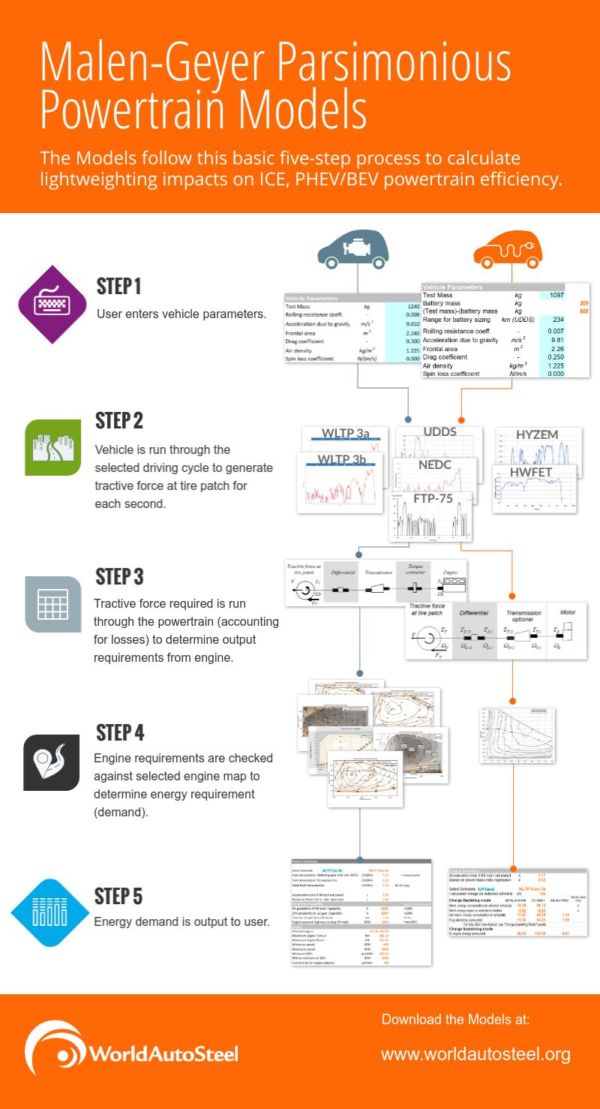Malen-Geyer Parsimonious Powertrain Models
 Download the PHEV and BEV Powertrain Models and User Guide.
Download the PHEV and BEV Powertrain Models and User Guide.
Download the ICE Powertrain Model and User Guide.
The use of Advanced High-Strength Steel (AHSS) grades offer a means to lightweight a vehicle. Among the benefits of this lightweighting are less fuel used over the vehicle life, and better acceleration performance. Vehicle designers as well as Greenhouse gas analysts are interested in estimating these benefits early in the vehicle design process.
Dr. Donald Malen, University of Michigan, and Dr. Roland Geyer, University of California at Santa Barbara, have developed a set of Parsimonious Powertrain Models that provide a way to estimate lightweighting benefits with minimum inputs.. Parsimony is the principle that the best model is the one that requires the fewest assumptions while still providing adequate estimates. These Excel spreadsheet models cover Internal Combustion powertrains, Battery Electric Vehicles, and Plug-in Electric Vehicles, and predict fuel consumption and acceleration performance based on a small set of inputs. Inputs include vehicle characteristics (mass, drag coefficient, frontal area, rolling resistance), powertrain characteristics (fuel conversion efficiency, gear ratios, gear train efficiency), and fuel consumption driving cycle. Model outputs include estimates for fuel consumption, acceleration, and a visitation map.
The download above includes the following Models:
- Parsimonious Powertrain Modeling—internal combustion vehicles and Related User Guide
- Parsimonious Powertrain Modeling—electric vehicles and Related User Guide
To learn more about the Model use and application, please see the following resources:
- AHSS Insights Blog, authored by Dr. Don Malen (available after 15 July 2020)
- Geyer, R., Malen, D.E. “Parsimonious powertrain modeling for environmental vehicle assessments: part 1—internal combustion vehicles“. International Journal of Life Cycle Assessment (2020), JLCA-D-19-00183R1, June 22, 2020.
- Geyer, R., Malen, D.E. “Parsimonious powertrain modeling for environmental vehicle assessments: part 2—electric vehicles“. International Journal of Life Cycle Assessment (2020), JLCA-D-19-00250R1, June 15, 2020.
The infographic following provides the basic process used in the Powertrain Models:

